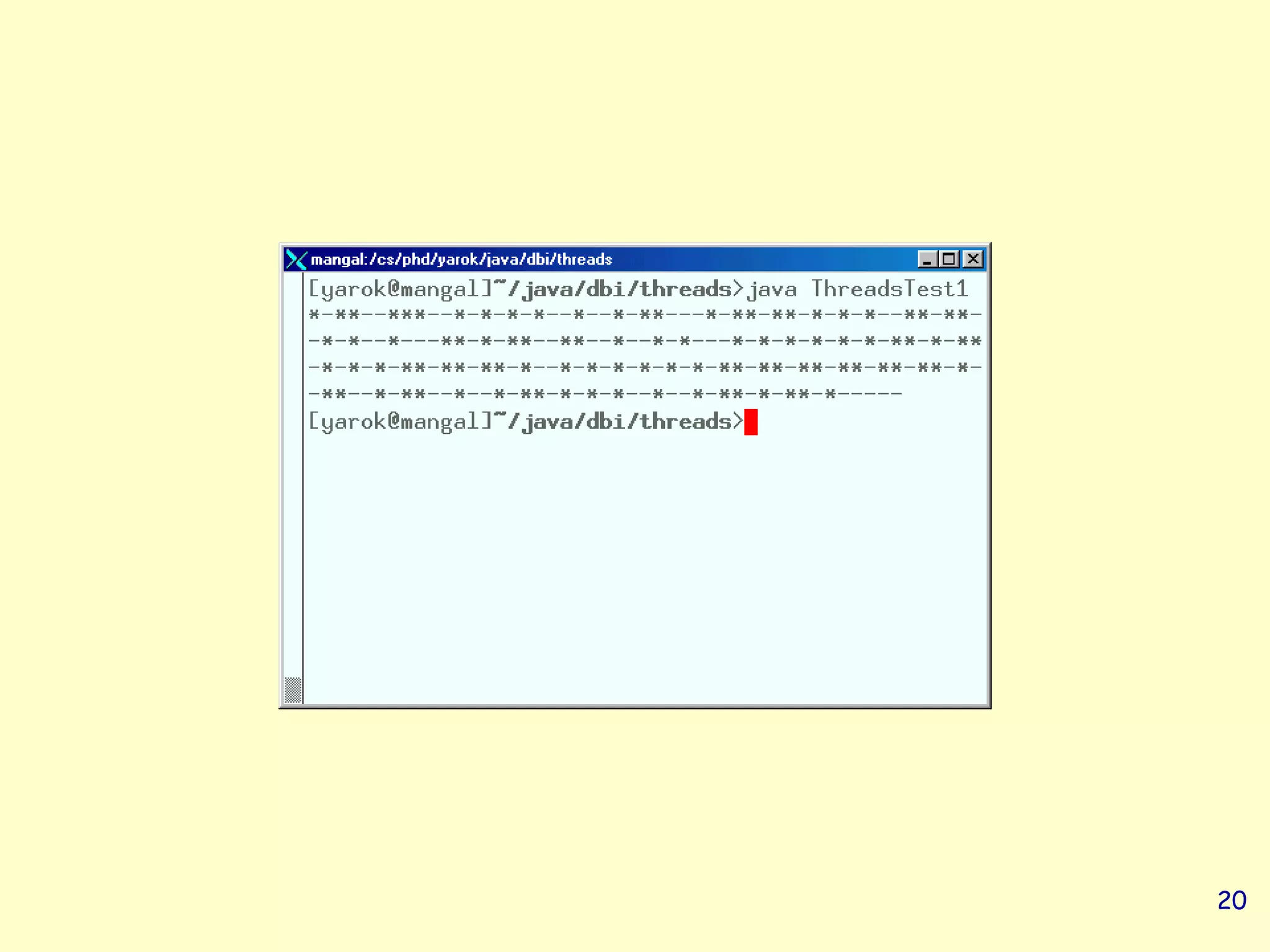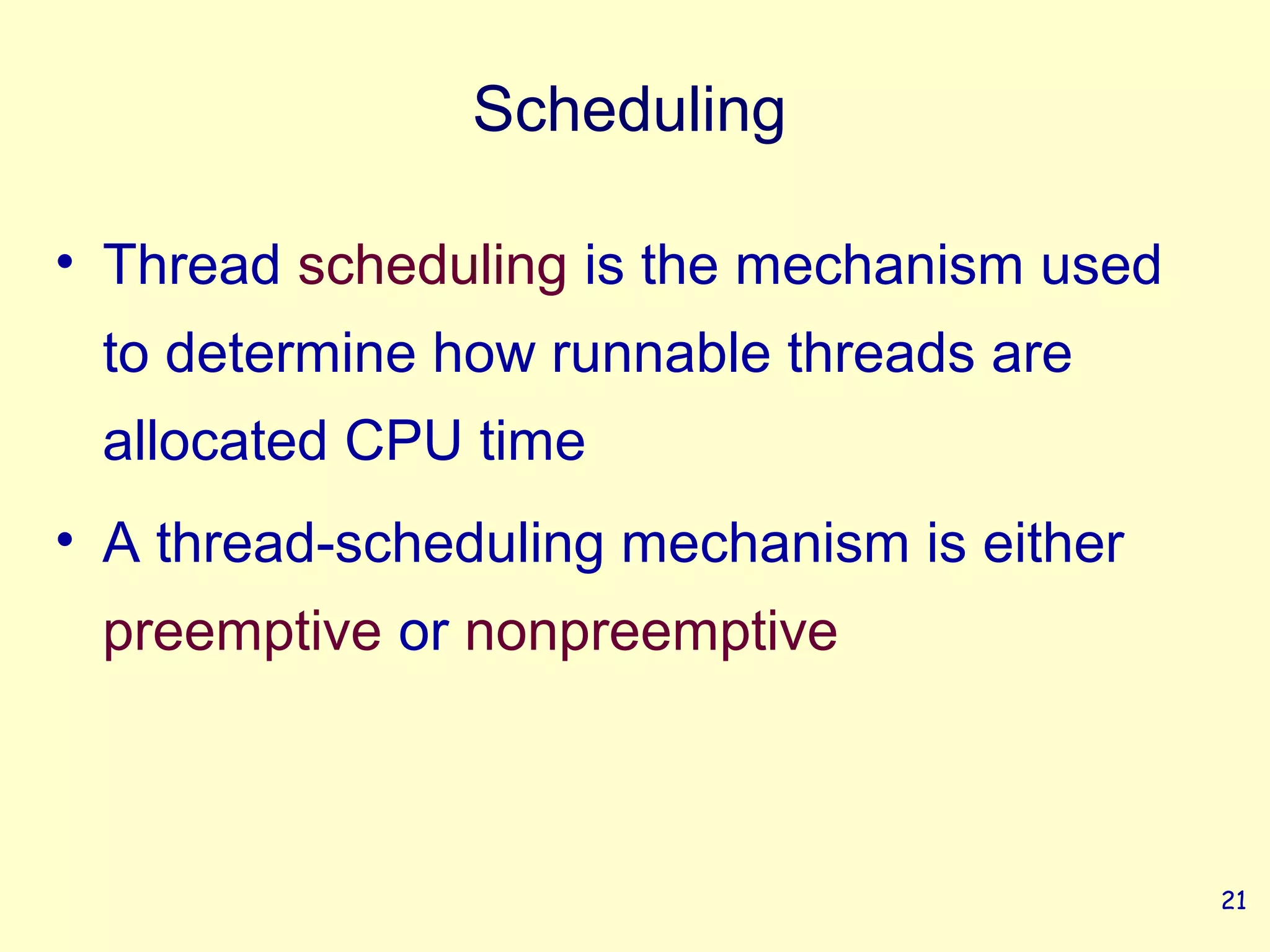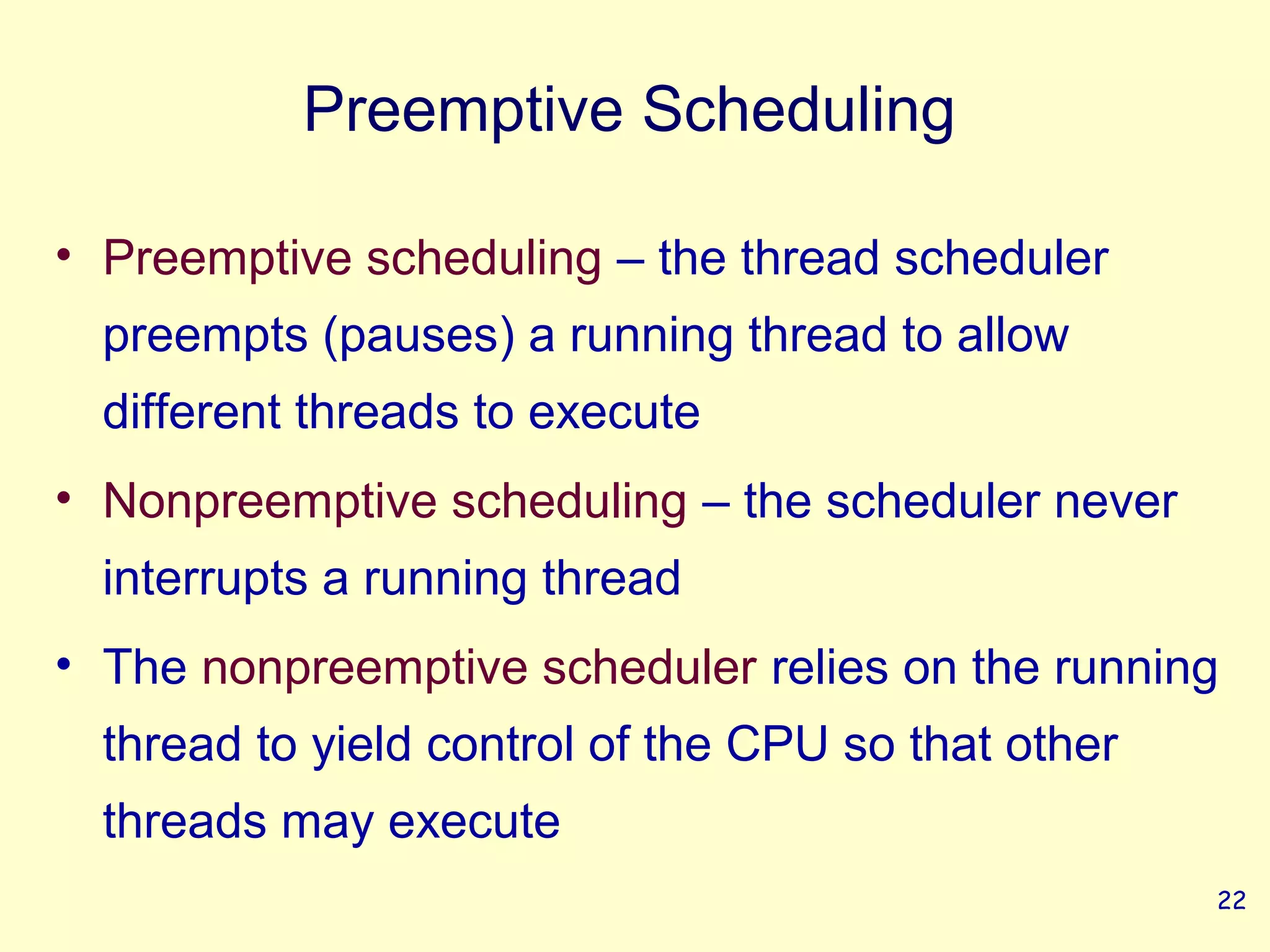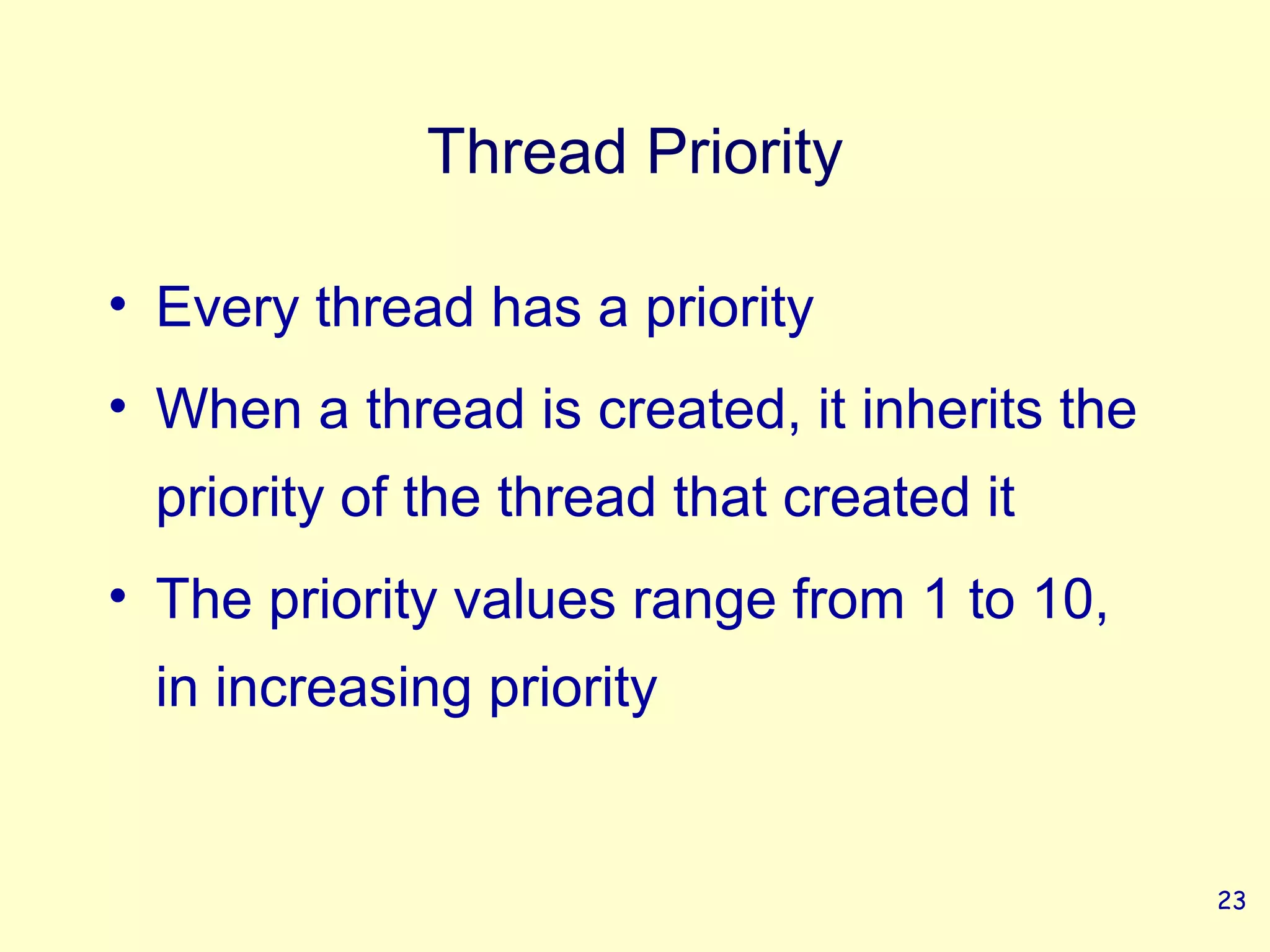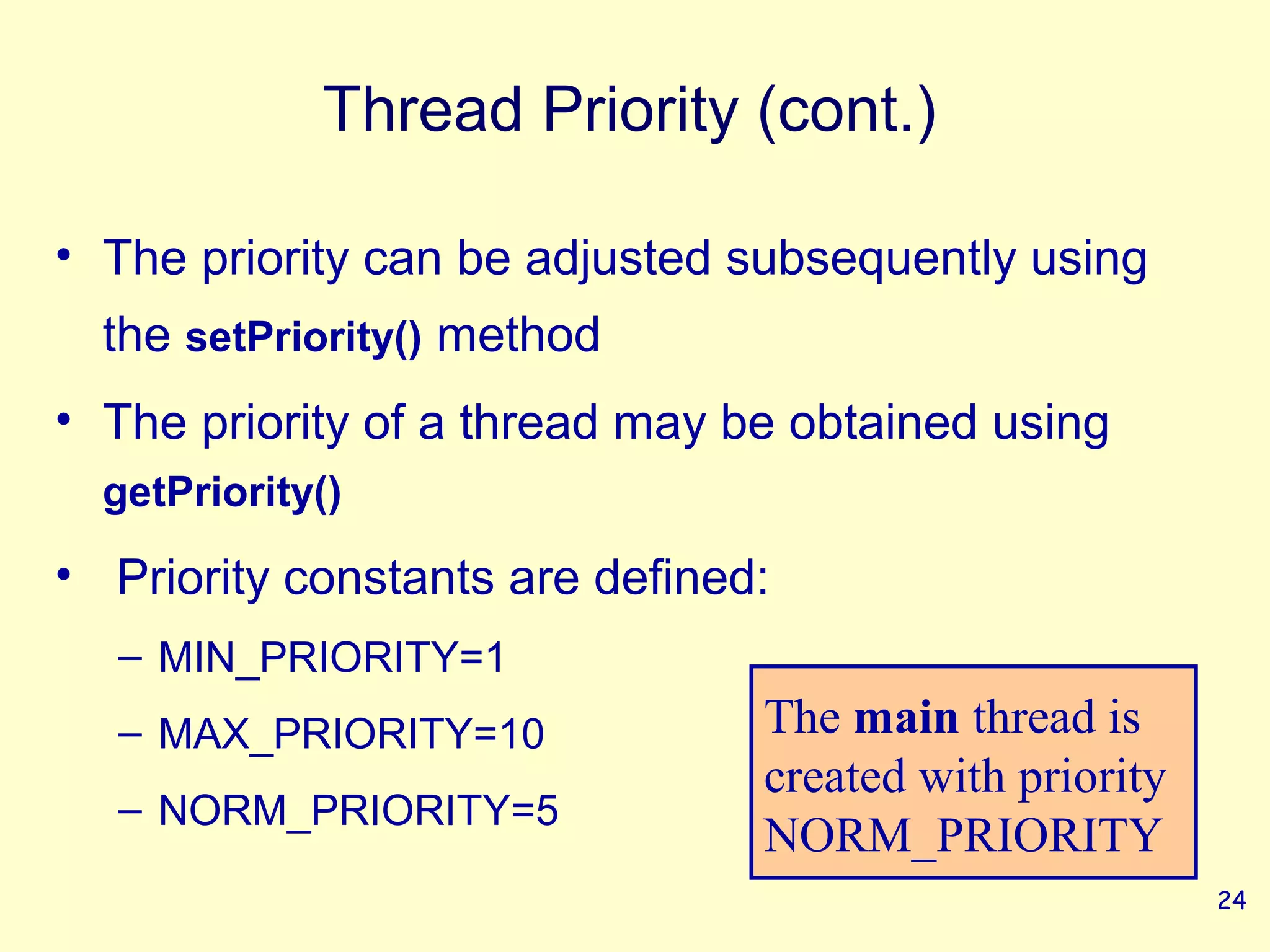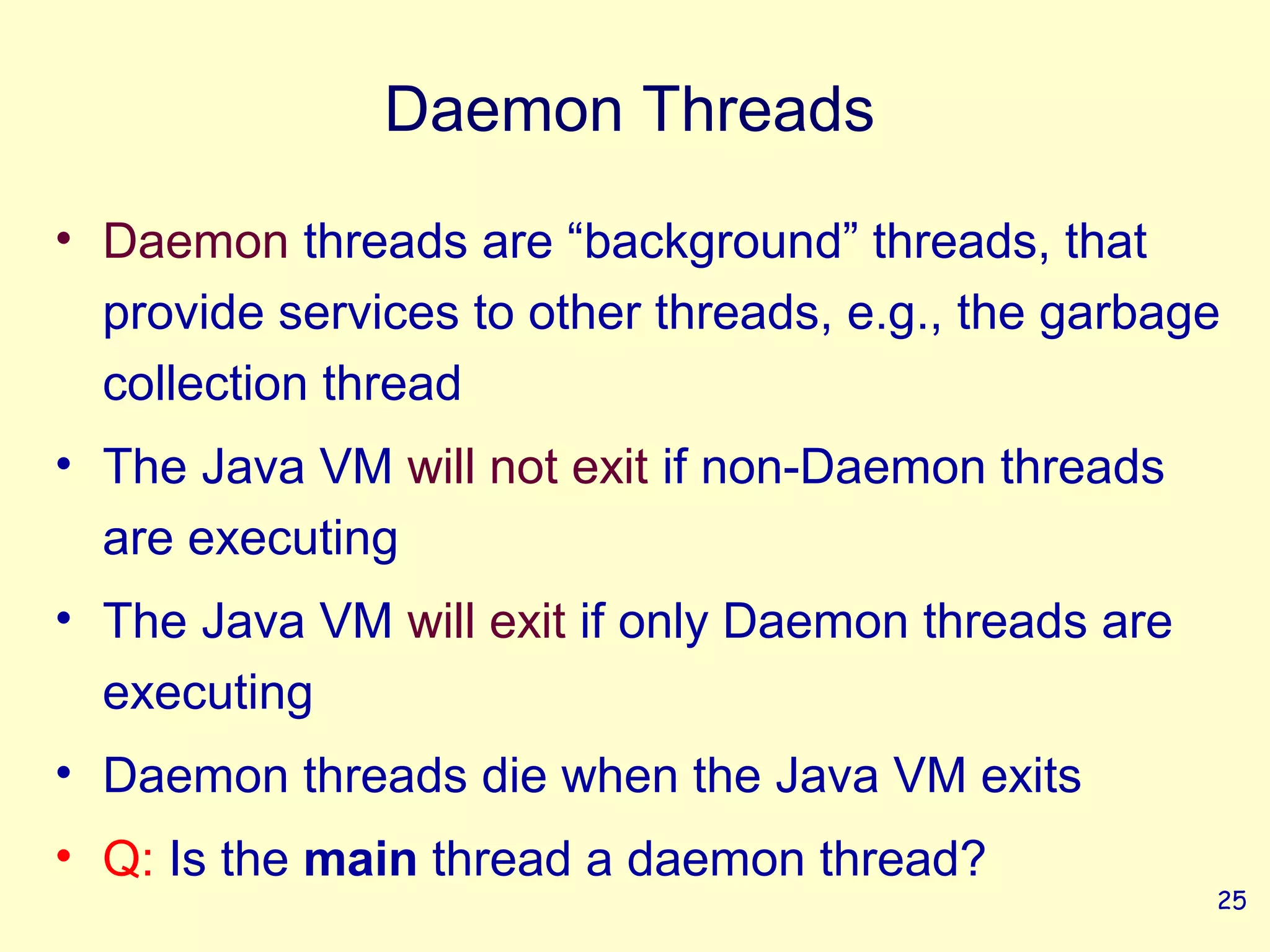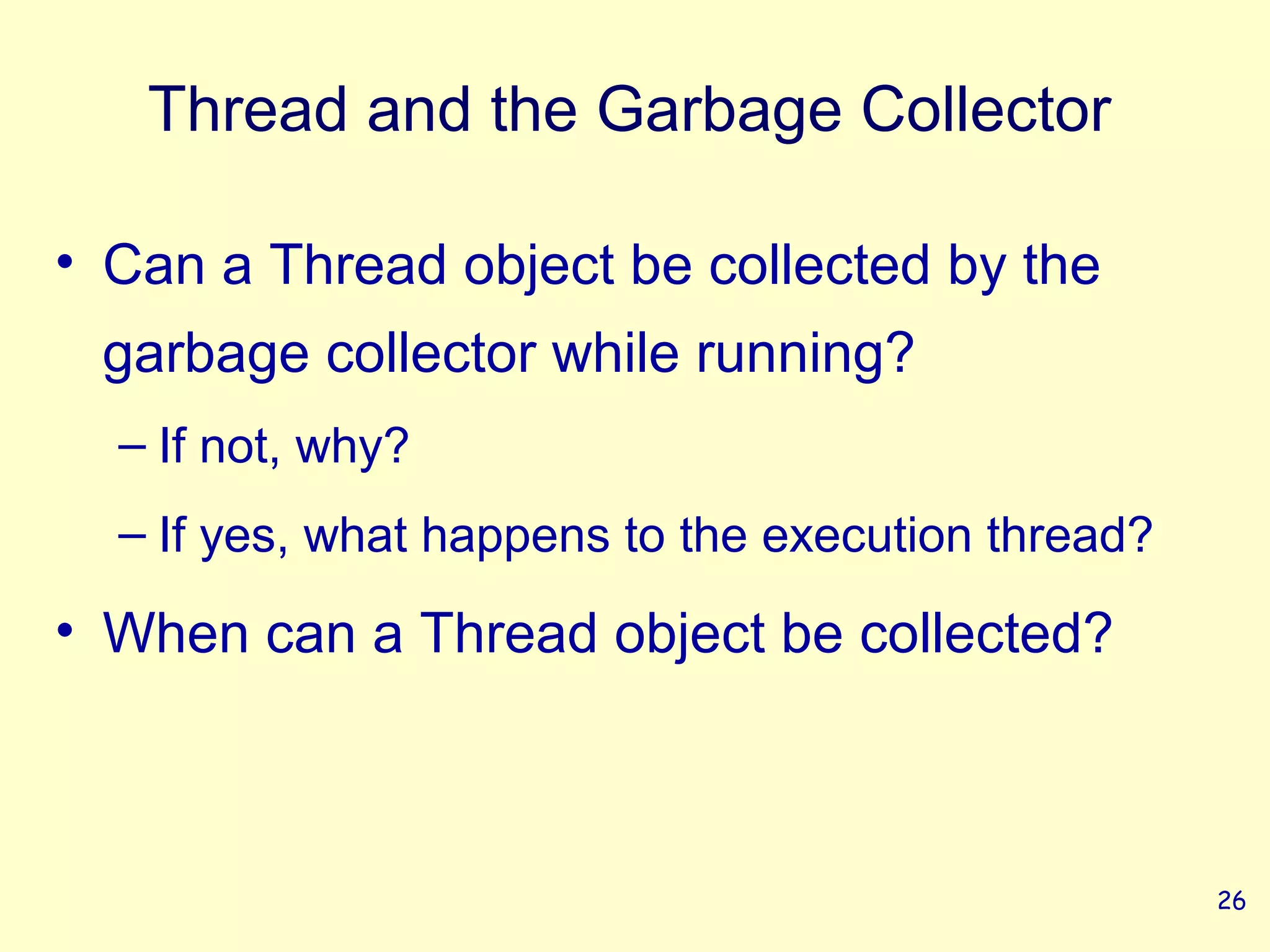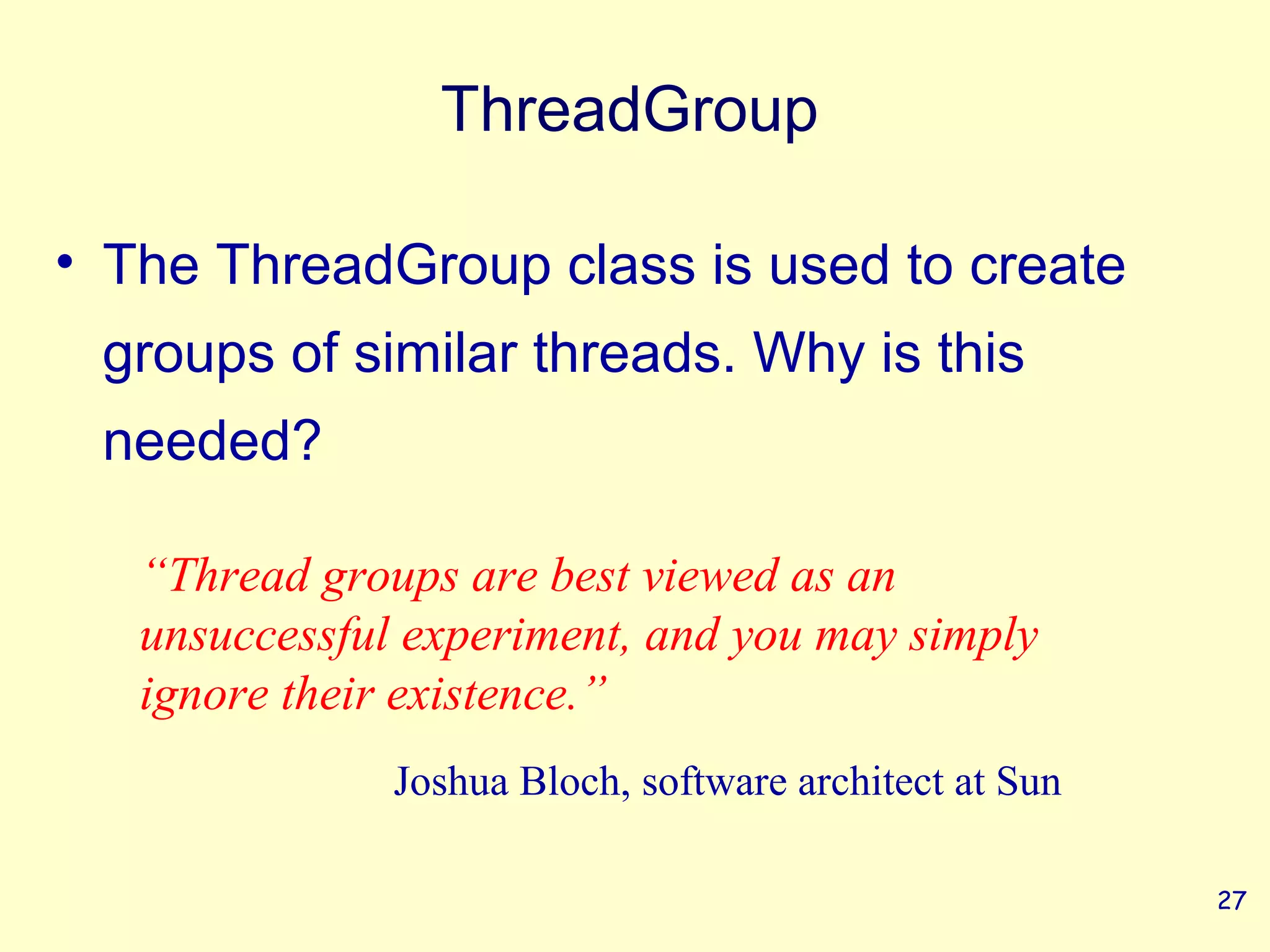The document discusses Java's multithreading and multitasking capabilities, explaining the difference between the two concepts and the management of threads within Java applications. It covers thread creation methods, thread lifecycle, scheduling types, and priority levels, as well as daemon threads and the relationship between threads and garbage collection. Additionally, it highlights practical examples of implementing and using threads in Java programming.

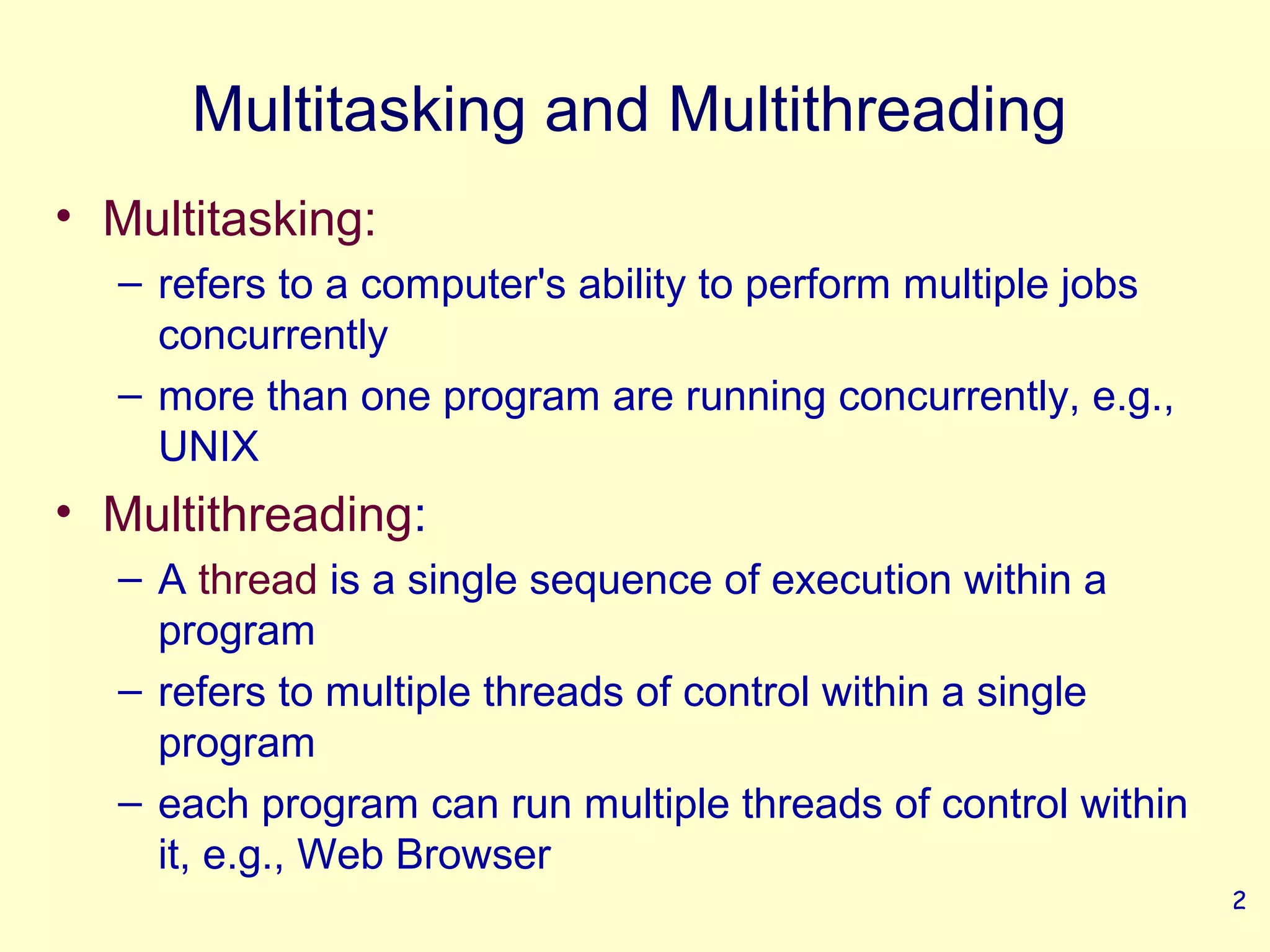

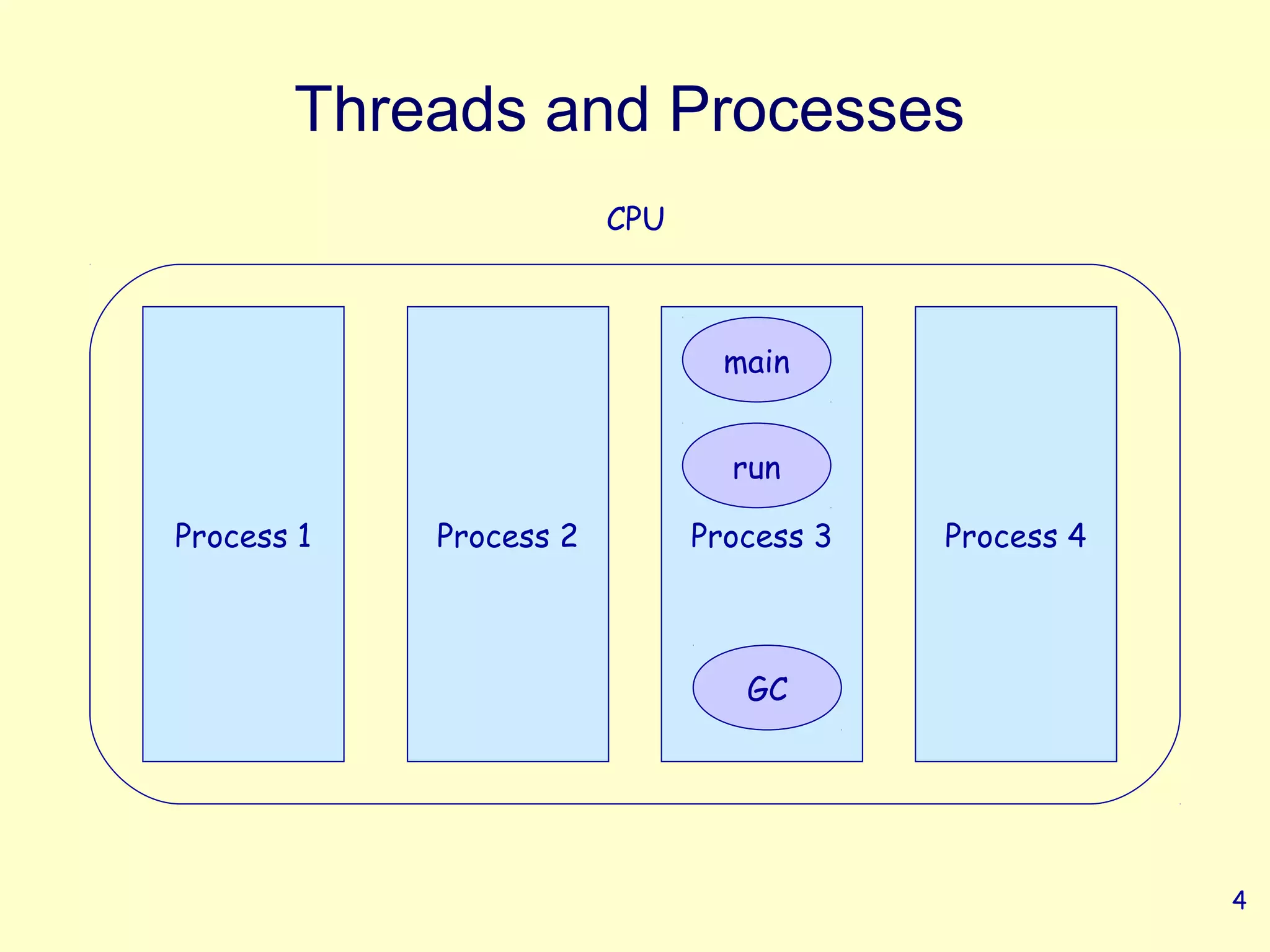
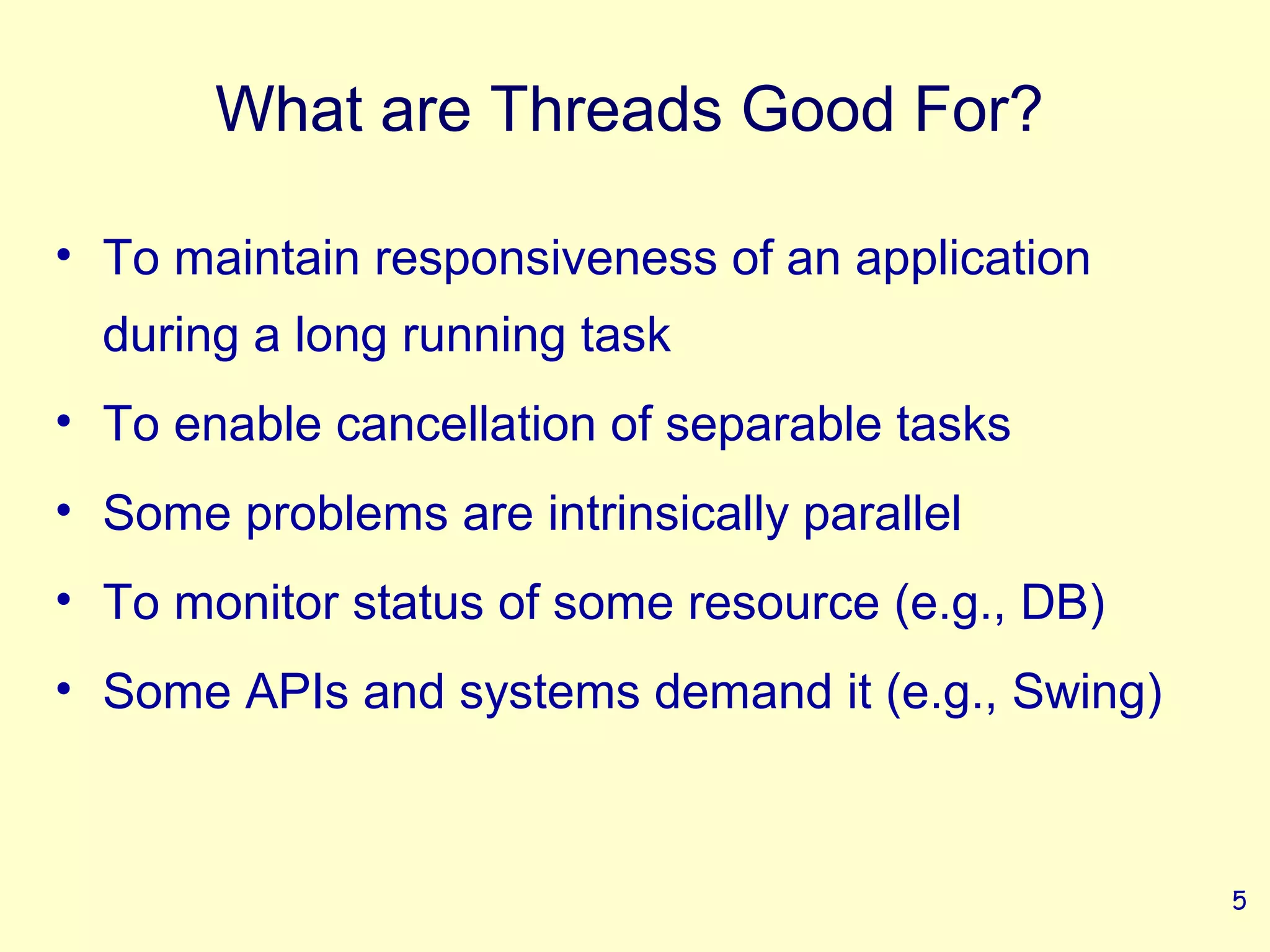
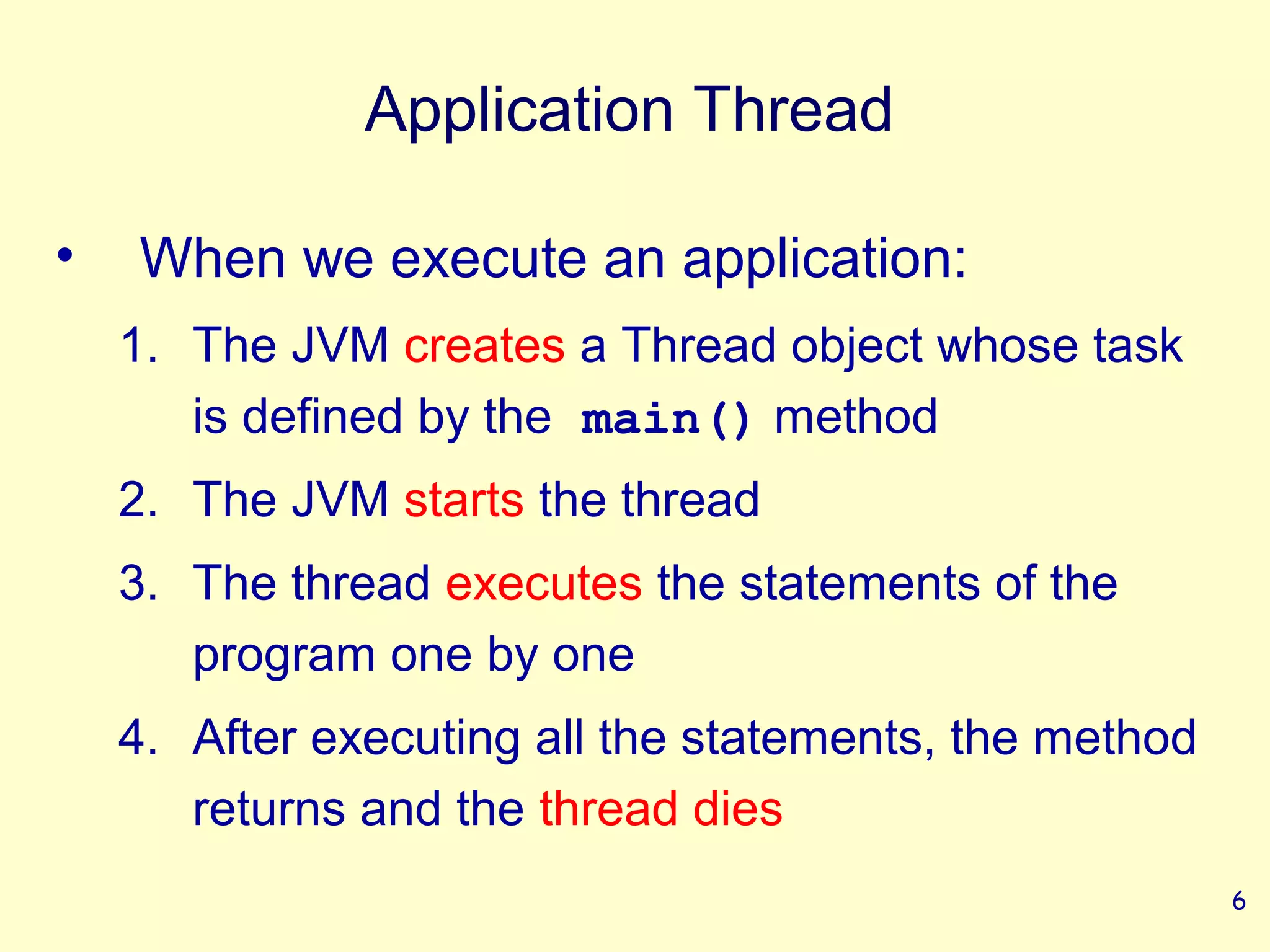

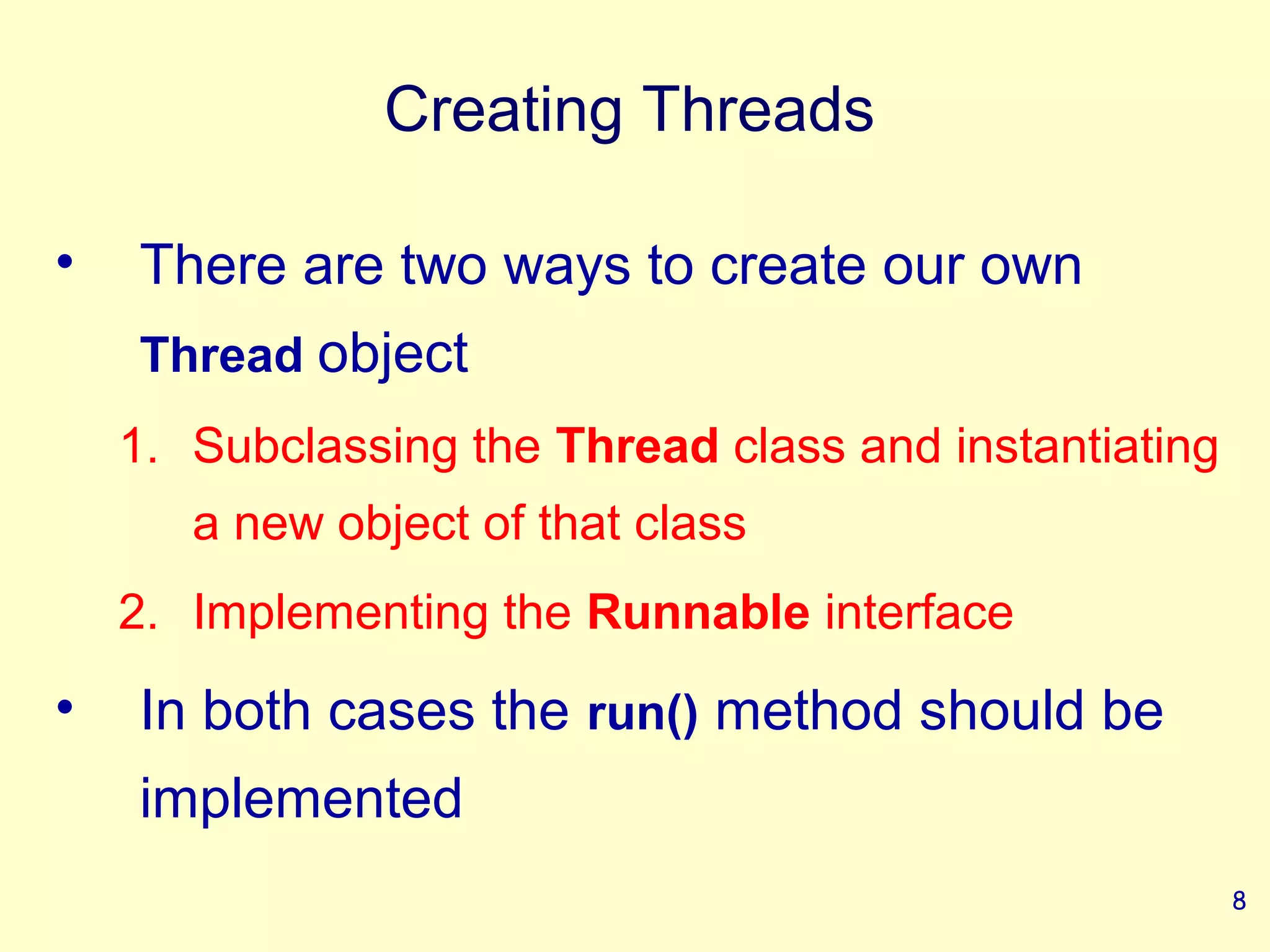
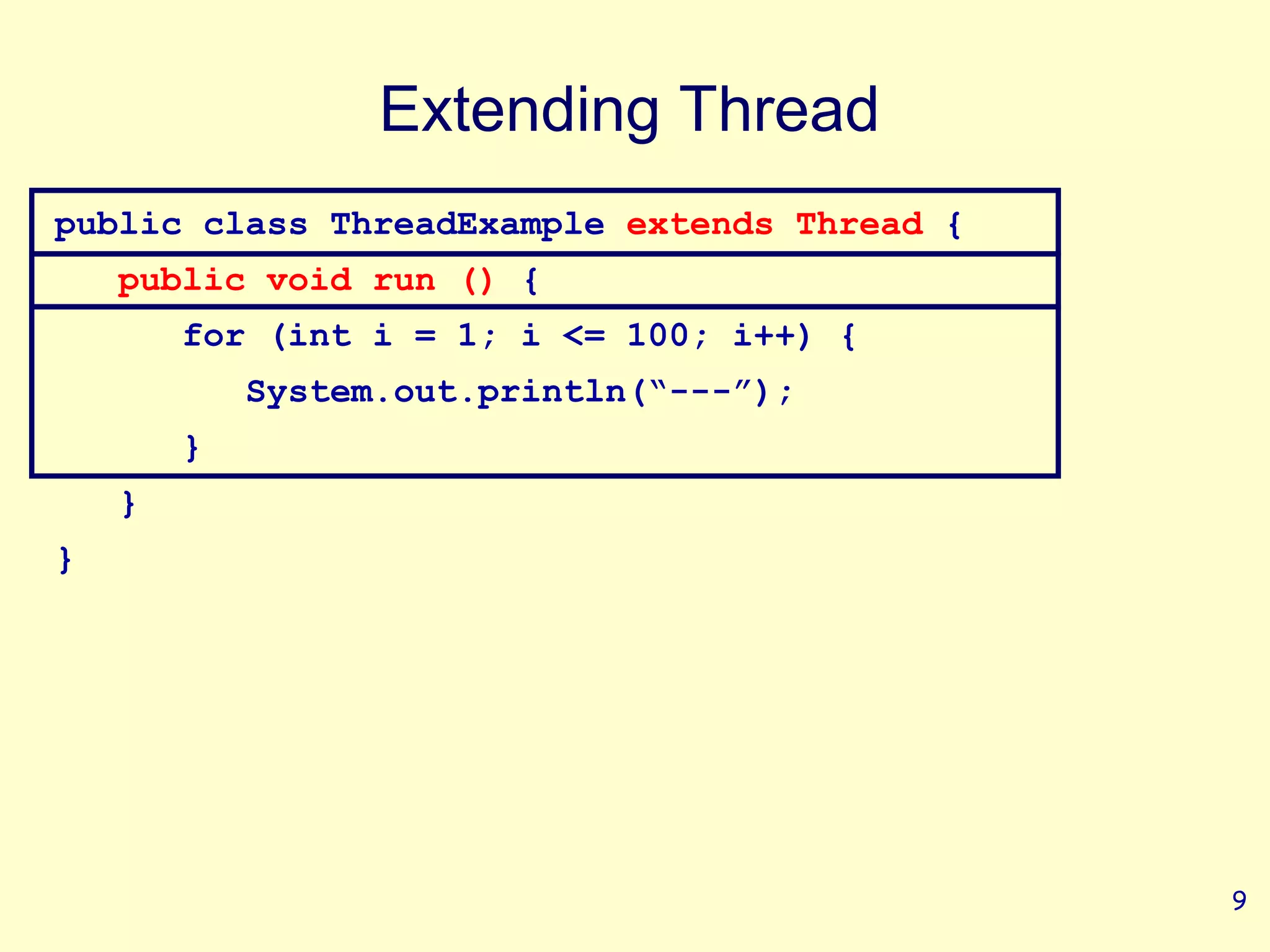
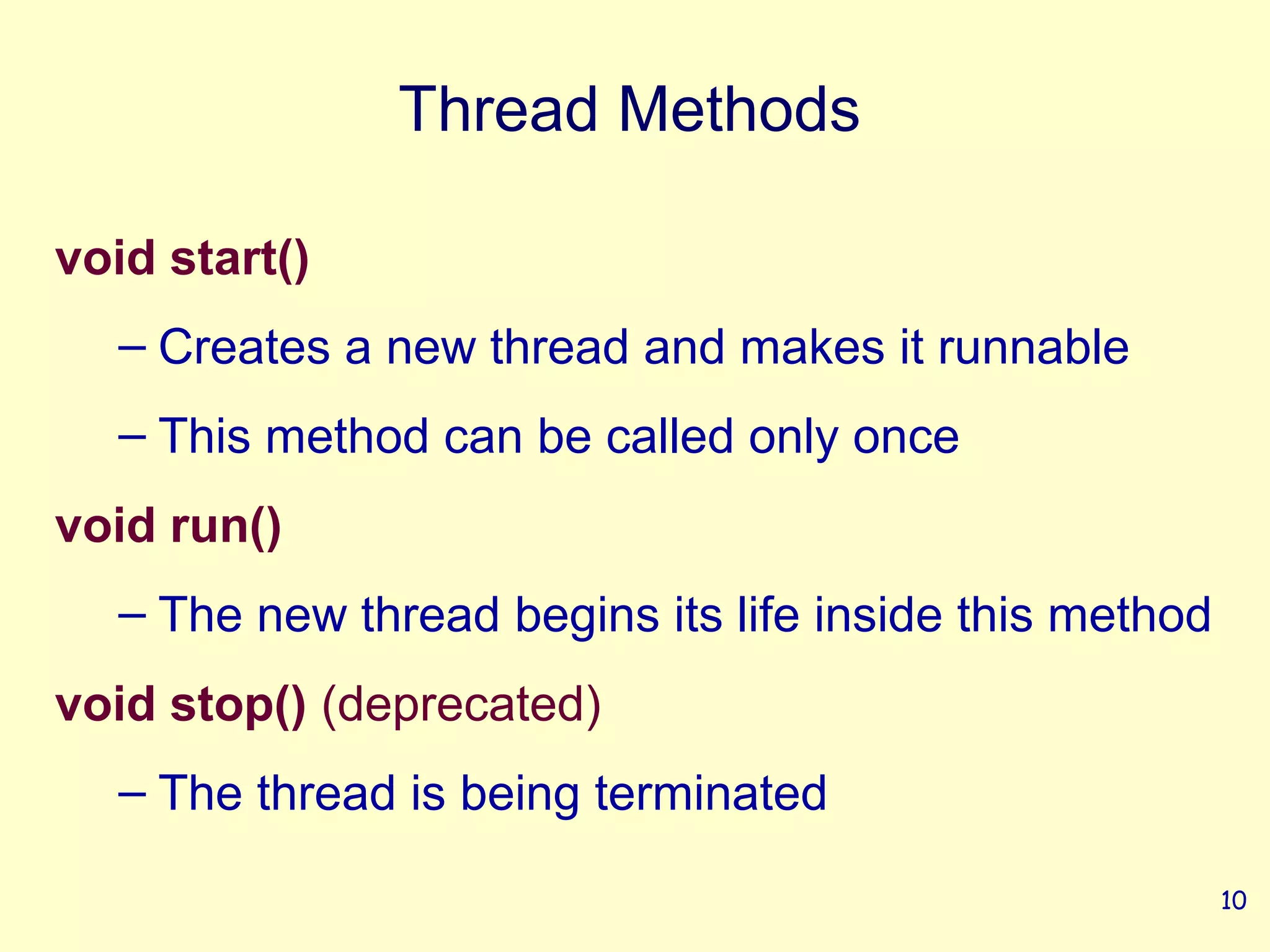

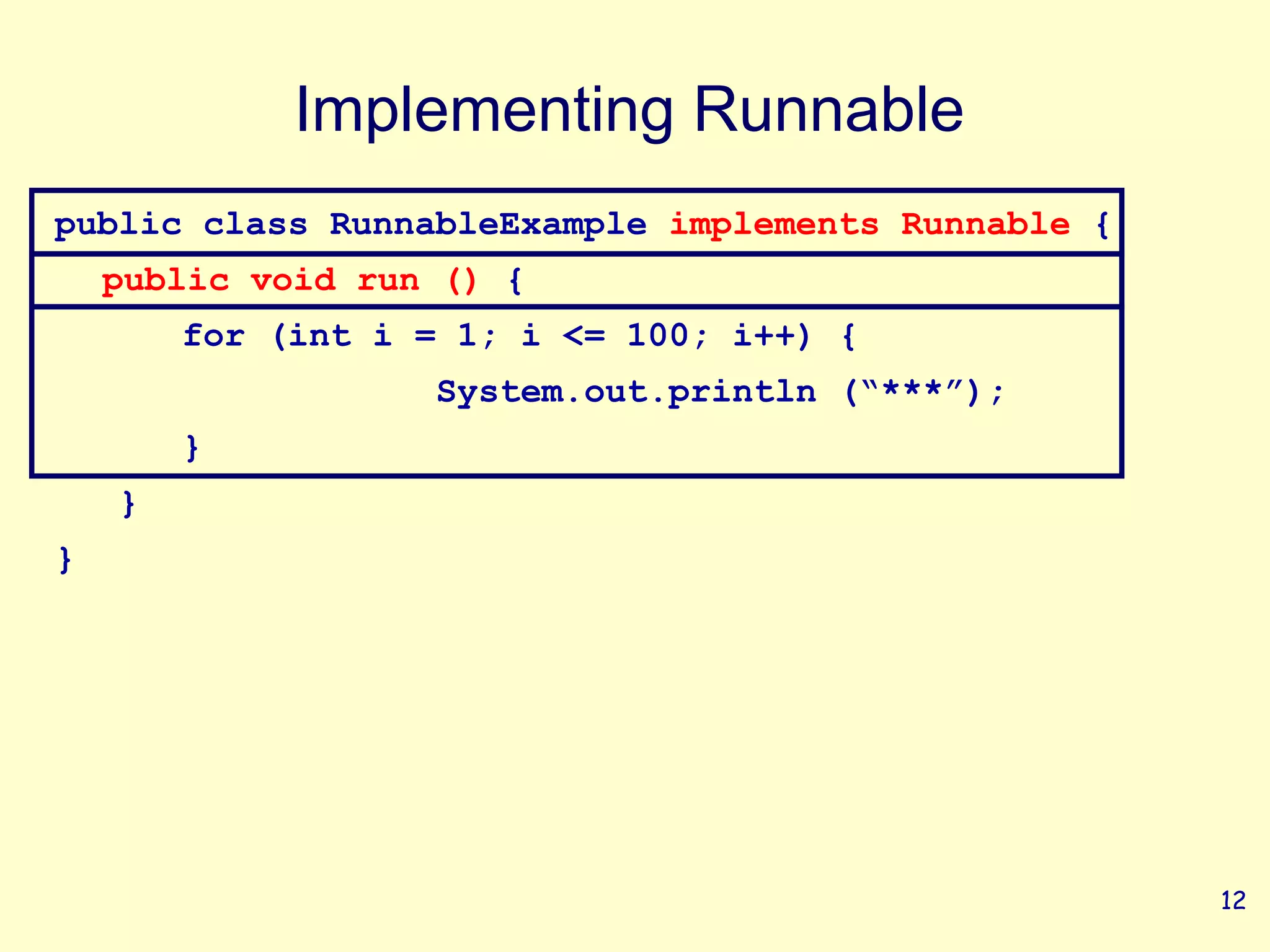
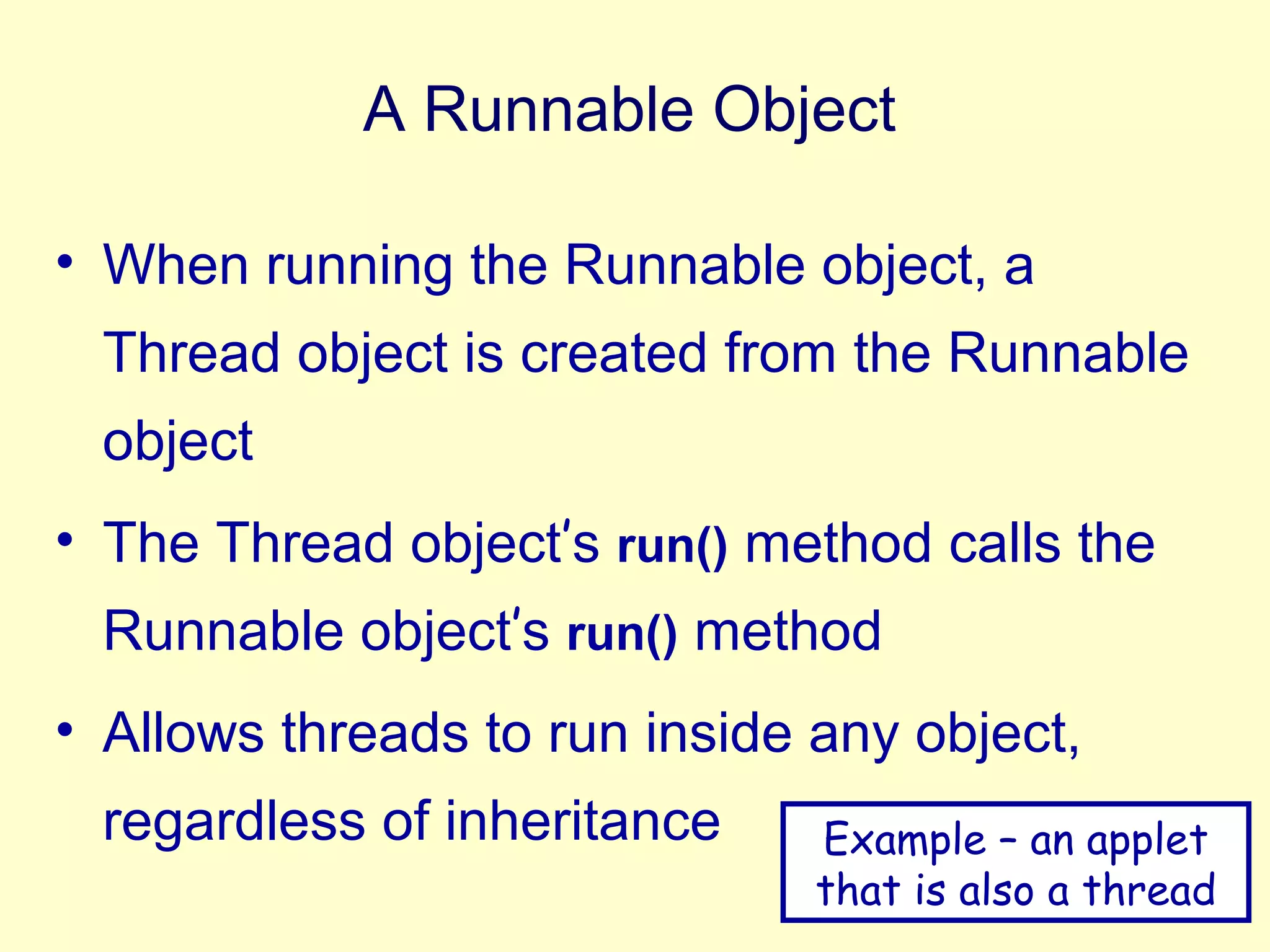
![Starting the Threads
public class ThreadsStartExample {
public static void main (String argv[]) {
new ThreadExample ().start ();
new Thread(new RunnableExample ()).start ();
}
}
What will we see when running
ThreadsStartExample?
14](https://image.slidesharecdn.com/javamultithreading-121021104010-phpapp01/75/Java-multi-threading-14-2048.jpg)
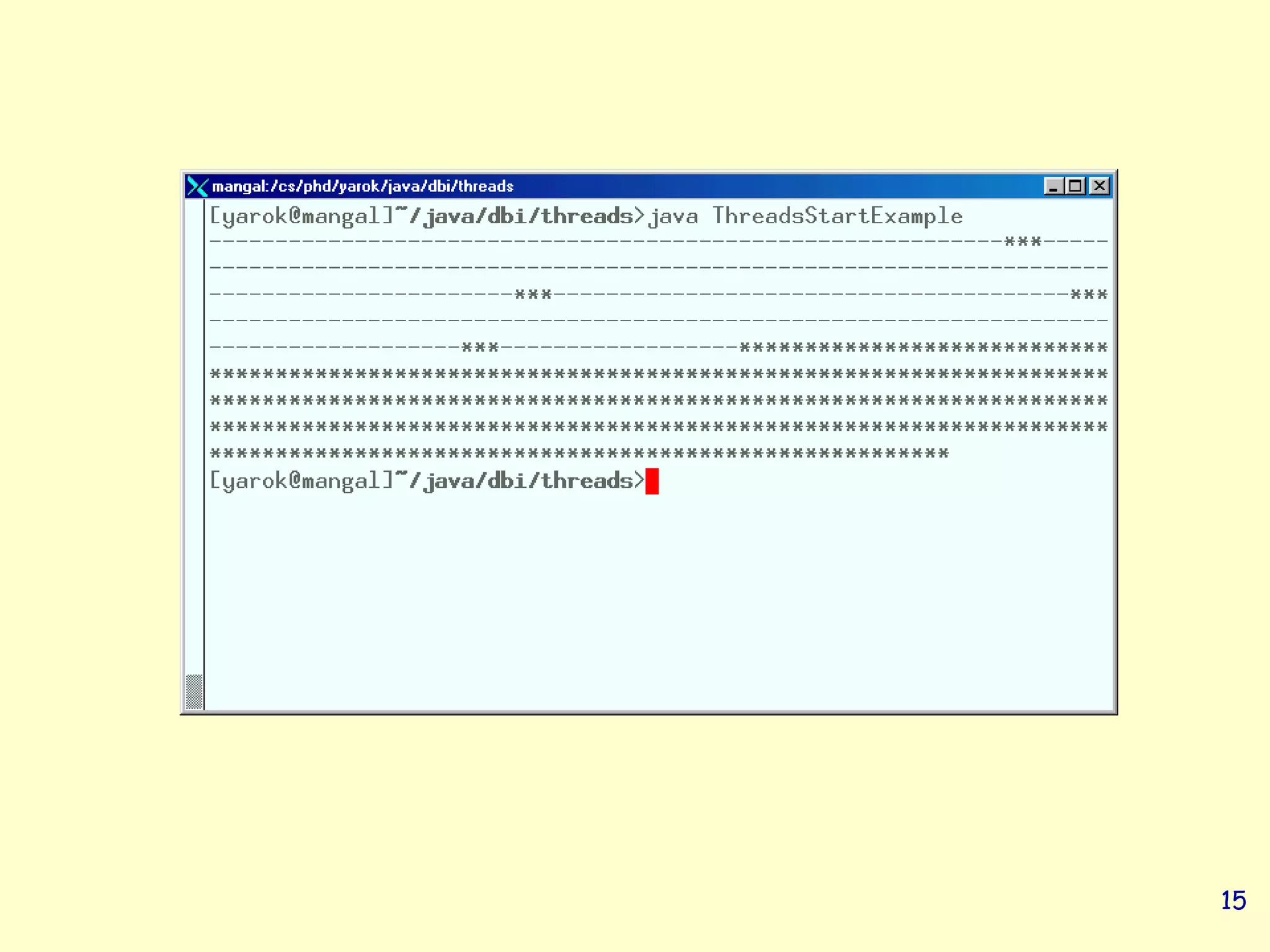
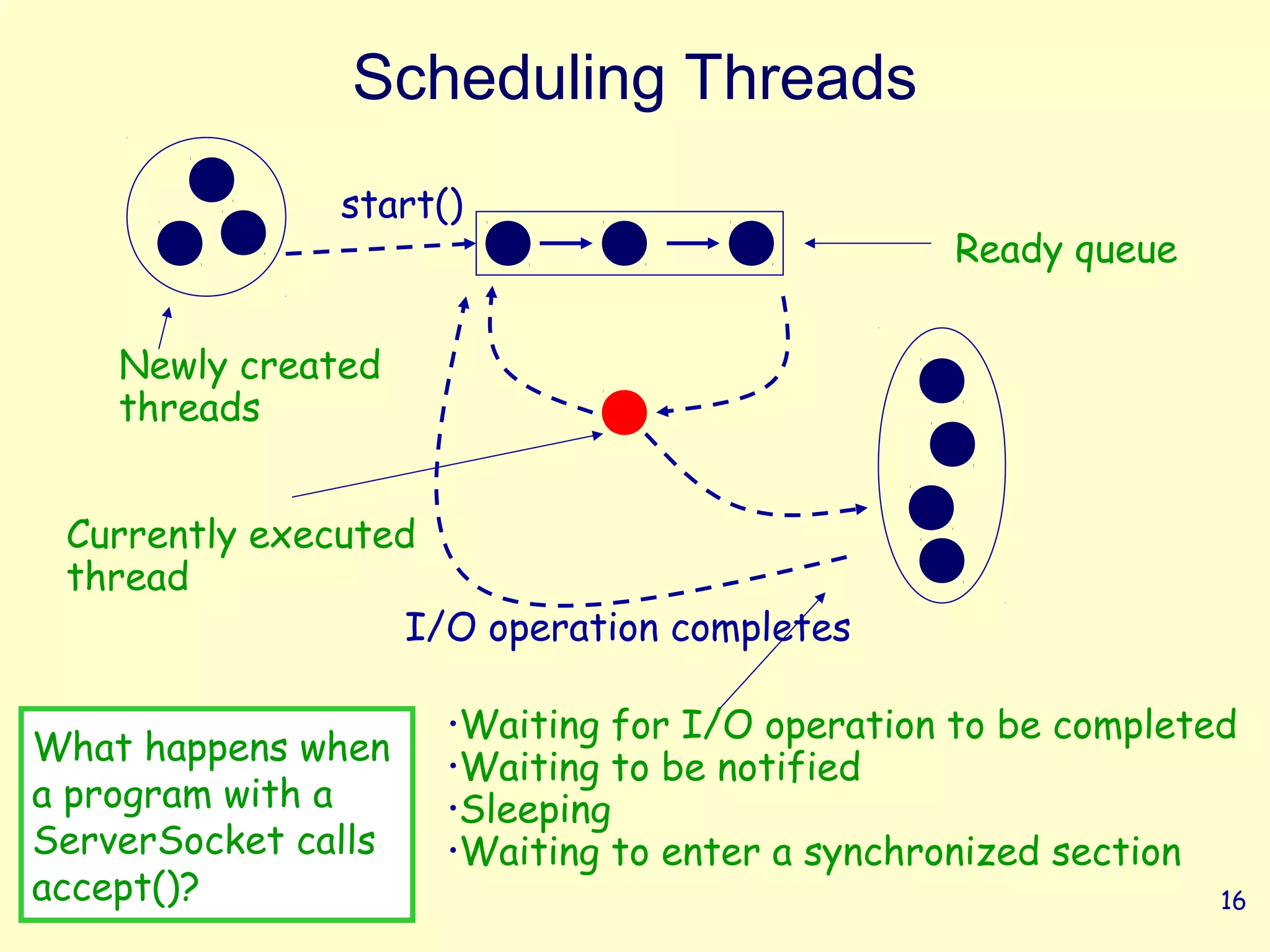
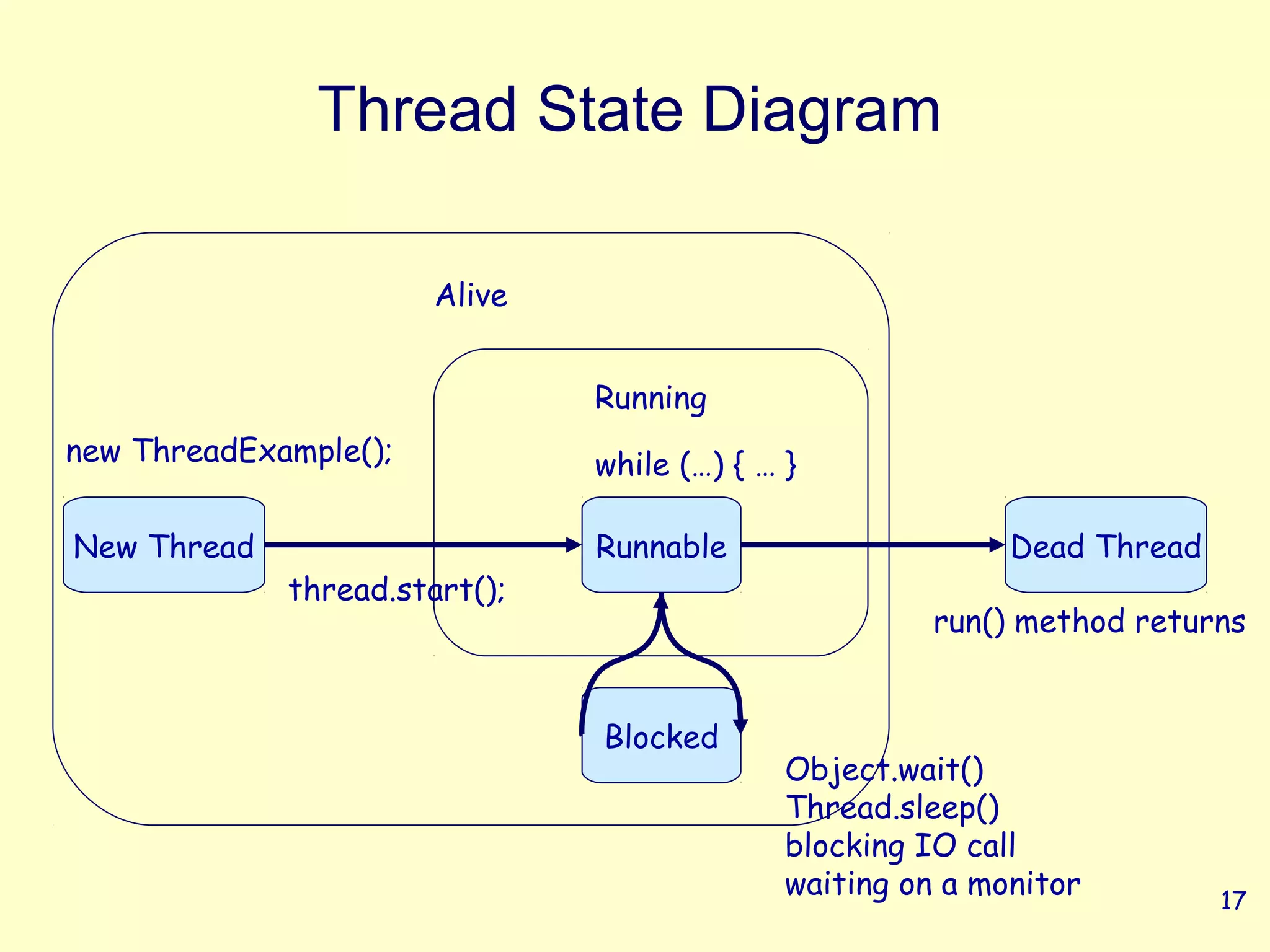
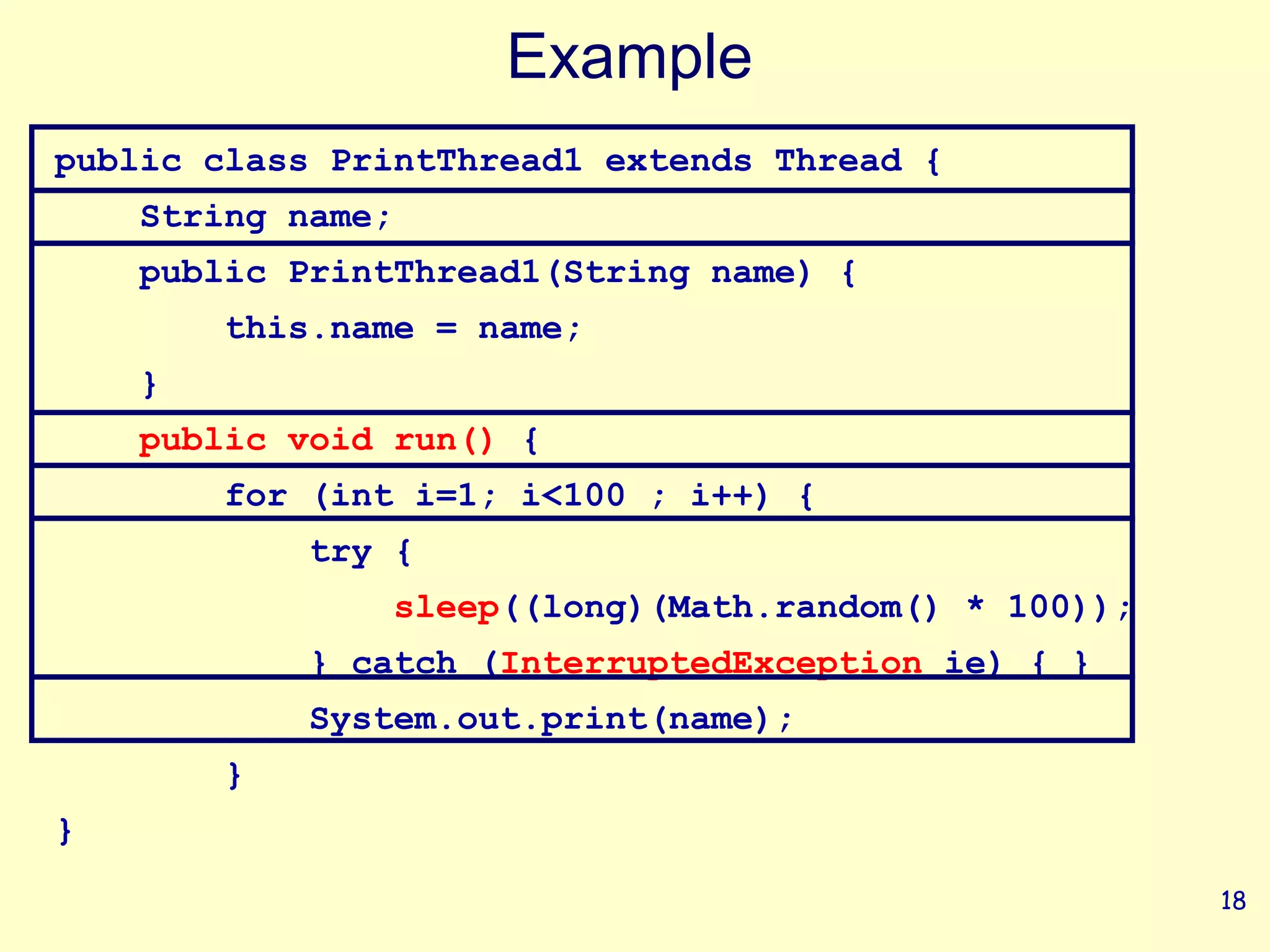
![Example (cont)
public static void main(String args[]) {
PrintThread1 a = new PrintThread1("*");
PrintThread1 b = new PrintThread1("-");
a.start();
b.start();
}
}
19](https://image.slidesharecdn.com/javamultithreading-121021104010-phpapp01/75/Java-multi-threading-19-2048.jpg)
